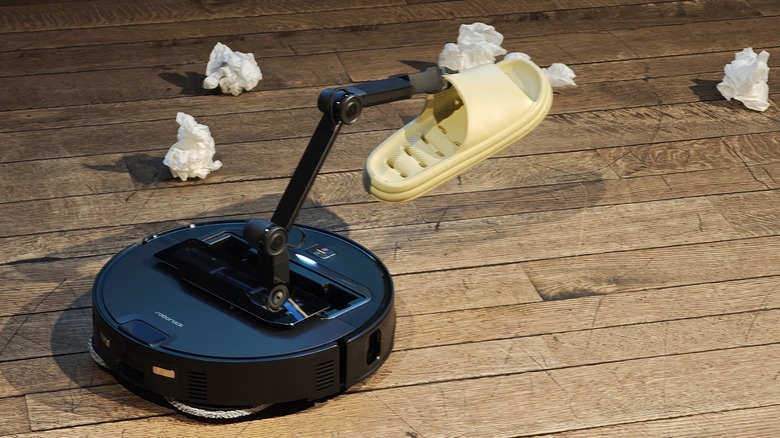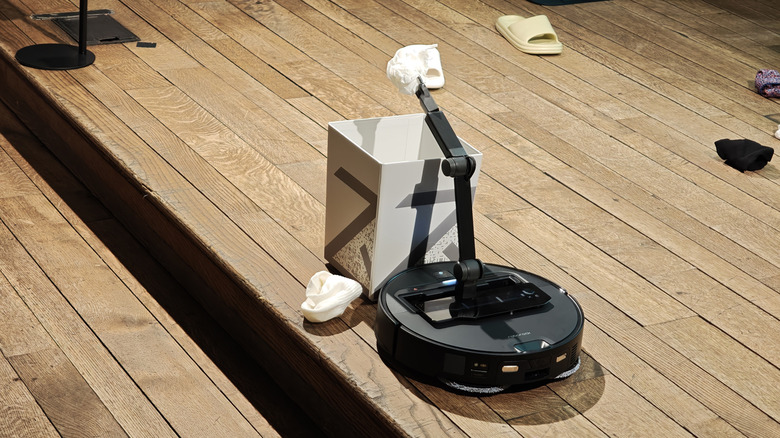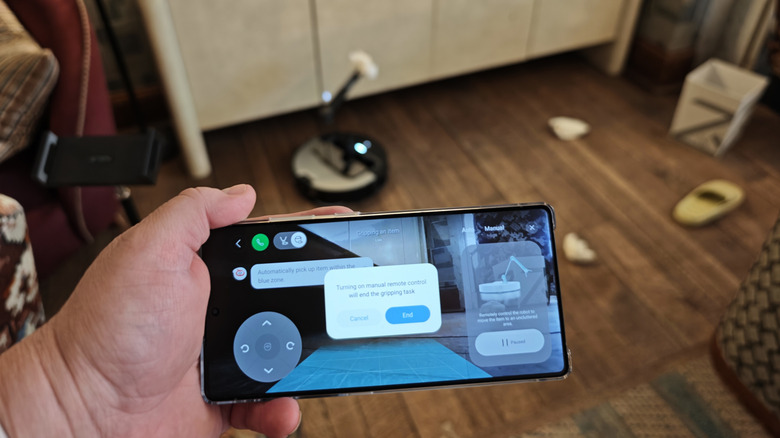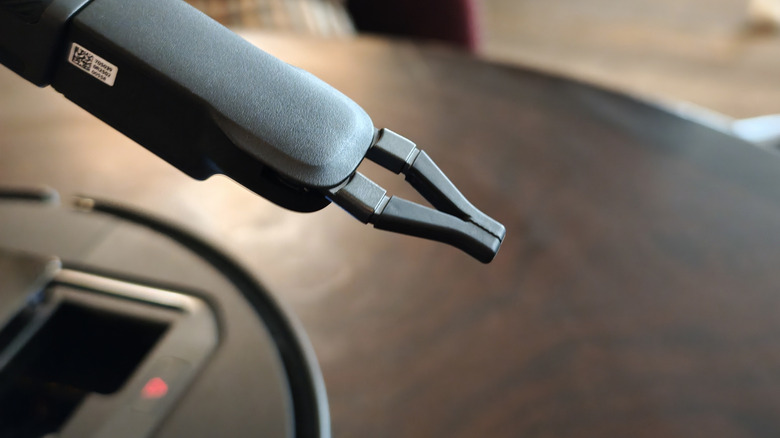How The Roborock Saros Z70 Solves The Biggest Problem With Robot Vacuums
I love the idea of robot vacuums, but unfortunately, the reality of them falls short of that idea. The premise is simple — a robot drives itself around, under, and through your living room, sucking up dirt and debris and keeping the floor clean. It can even do this multiple times throughout the week to keep things even cleaner than you could, unless of course you have a housekeeper.
But the reality is that while robot vacuums can do a great job at keeping your floor clean of dust and dirt, it's the bigger things that cause the headaches. I have reviewed robot vacuums in the past, but I found that the work I have to put in to keep a floor clean enough for the robot to do its work is not worth it. I have two kids and two dogs, and none of them pick up after themselves. We can discuss my lack of parenting skills another time, but suffice to say, I'm not alone here.
So, when I saw the Roborock Saros Z70 with OmniGrip at CES use a robotic arm to pick up some loose slippers laying around the floor — needless to say, I was intrigued. Now that Roborock is launching the Saros Z70, I was able to go hands on and see it in more of a casual setting. Here's what I found out.
Some highs and lows
It's important to note that, early on, this device is definitely a 1.0 product — it's a pretty well-refined 1.0 product, but it's still 1.0. There are a lot of questions that members of the press asked that elicited "no," "not yet," and "we're considering it" answers. One of the most notable limitations at this time is the fact that the vacuum can only pick up and sort items that the AI on board recognizes from training. If you throw it a curveball, it will ignore it and let you know that it found a curveball.
Another limitation is the fact that this vacuum will either mop, vacuum, or sort items, but not all at the same time. Notably, and counter-intuitively, sorting is the last task the vacuum performs, not the first. The reasoning is sound — the vacuum can spend so much time picking up and depositing items that it doesn't have battery power left for actually vacuuming. Similarly, if it performed the task first, and went back to recharge, more items could have fallen on the floor before it was able to start vacuuming. There really is no correct order to perform these tasks — one scenario elicits just as many "but what abouts" as another, so this is the one Roborock went with. It's a fair point.
Finally, the robot can only sort items into two distinct places. The first is a trash can that Roborock provides because it has markings on it that the robot recognizes as the trash can. The second area is any area you designate to hold the loose shoes and other stuff it finds. Ideally, the robot could put dog toys in one corner, shoes in another corner, and socks and clothes in a third corner. We're not there yet.
DIY cleaning
If the robot encounters an item it doesn't know what to do with, it will tell you about it, and indicate it in the app. From there, you can designate whether an item is trash, or if it needs to go to the sorting pile manually. However, you can go even further: You can control the robot yourself, including the arm and the claw, to drive, look around, and pick up items manually.
This was one of the more fun parts of the hands-on time. I was able to zip the robot around and pick up balls or paper and deposit them in the trash can manually. You can also put shoes and socks and anything else (up to 300 grams) wherever you want them with the manual controls.
There are two cameras you can use to control the vacuum: There's a camera on the front that is your primary camera, used to navigate the floor and recognize objects. Plus, there's a camera mounted on the claw arm that you can move around as well to see a top-down view of what you're trying to pick up. You can also aim that camera at the ceiling if you are not at home and want to have a look around.
There is no infrared sensor to allow the robot to work in the dark, but there is a light it can use to light its path if you need to run it at night. I think I'd prefer an infrared solution to avoid shining a light on the floor if you want to run the vacuum at night, but I can understand Roborock wanting to omit an extra sensor and light source.
But it still solves the problem
There are bugs to be worked out, but that circles us back to the 1.0 notice in this product. This is the first of many robots to come in the future that will gradually solve all these problems. Of course, this vacuum also carried early adopter pricing to the tune of $1,899. It's worth noting that this vacuum is the same model as the Roborock Saros 10R, but with the robotic arm (and an extra $300) added to it. If you don't want the robot arm, you can simply buy the Saros 10R.
Personally, I'm glad that a company wants to solve this problem, and I think this is a good solution. I was impressed by the robot's ability to grab items of different shapes and sizes with an ideal approach and angle, which is not trivial as I later learned when piloting the vacuum manually. Roborock has some good ideas, and this execution is a fine example of those ideas, but the price tag — and the gulf between where we are and where we want to go — could be daunting.
All the same, if you want to take that journey from start to finish, you can pick up the Roborock Saros Z70 when it ships in the coming weeks. Despite my home's lack of accommodations for robot vacuums — due to its messy inhabitants, or maybe because of that — this is one that's high on my list to test out fully in my chaotic kitchen and living room.



